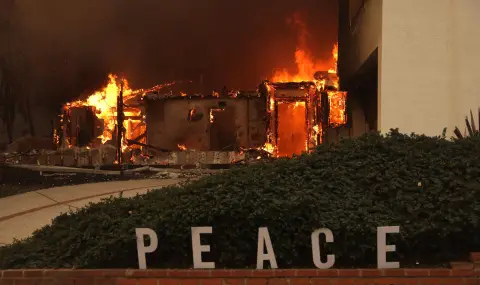Few places epitomize wealth like Hollywood in Los Angeles. It is precisely because of the luxury that this and other residential areas in the northern part of the metropolis symbolize that the wildfires in the Los Angeles area could become one of the most expensive natural disasters in US history.
The fires have killed at least 24 people and destroyed billions of dollars worth of property. They have threatened landmarks such as the Hollywood Sign and left several popular places in Los Angeles in ruins.
Losses in the tens of billions
Analysts at Goldman Sachs and JPMorgan expect the damage caused by the fire to exceed tens of billions. Estimates put the cost of the damage at more than $50 billion. "We estimate that insurance claims from the event could exceed $20 billion. And even more if the fires are not contained," JPMorgan said.
Moody's expects insurance claims "to run into the billions, given the high value of homes and businesses in the affected areas." If accurate, the wildfires would be the costliest disaster in U.S. history for the insurance industry.
The "Camp Fire", which broke out in Butte County in Northern California in November 2018, is still the costliest wildfire in U.S. history in terms of insurance claims. Insurance company Aon estimates the damage at nearly $13 billion. All four of the most expensive fires in the United States have occurred in the past seven years. However, the final amounts of insurance claims for natural disasters could differ dramatically from initial estimates, as it is difficult to make accurate predictions while the elements are still raging.
Up to $150 billion in damages?
To calculate the damages of the disaster, one must distinguish between losses that are fully covered by insurance and the broader economic losses that are not fully paid out.
The private US weather service AccuWeather, which also measures losses from weather events, said that damages from the Los Angeles fires could ultimately reach between $135 billion and $150 billion, making them one of the costliest natural disasters in US history. "Hurricane winds have driven the flames through neighborhoods with multimillion-dollar homes. The devastation is horrific and the economic damage is enormous," the weather company said.
According to official figures, between 9,000 and 10,000 properties have already been destroyed, including many business buildings. Infrastructure has also been severely damaged, further increasing the long-term cost of rebuilding.
Hurricanes have been the most devastating
The costliest natural disasters in the United States have always been hurricanes. The costliest is undoubtedly Hurricane Katrina, the devastating tropical storm of 2005 that caused enormous human casualties and inflicted severe economic damage, especially in the southern city of New Orleans. According to Aon, insurance claims from Hurricane Katrina alone are estimated at over $100 billion.
According to the National Oceanic and Atmospheric Administration, the total cost of damage from the disaster is nearly $200 billion, surpassing Hurricane Harvey (2017), Hurricane Yen (2022), Hurricane Maria (2017) and Hurricane Sandy (2012).
The entire insurance system could be rethought
The wildfires are expected to put a lot of pressure on California's already struggling home insurance sector. Some companies - such as Allstate and State Farm - recently stopped selling new home insurance policies in California. They blamed the authorities for increasing home insurance prices in the state due to legal restrictions. That has made it increasingly difficult for them to operate in an area that has been hit by severe wildfires in recent years.
That leaves many homeowners without private insurance. They must rely on California's state insurance system. The insurance risk in the Pacific Palisades area alone, one of the worst-hit by the fires, is estimated to be about $6 billion. The state's insurance plan's large losses could force private insurers to step in, as the state plan contains provisions that require private insurers to pay for losses that the state cannot cover.
Some analysts say the increasing number of wildfires in California could require a rethink of the entire homeowners insurance system in the most populous state in the United States. Climate change is increasing the frequency and extent of wildfires in California, making large cities and densely populated areas increasingly at risk.
Author: Arthur Sullivan
